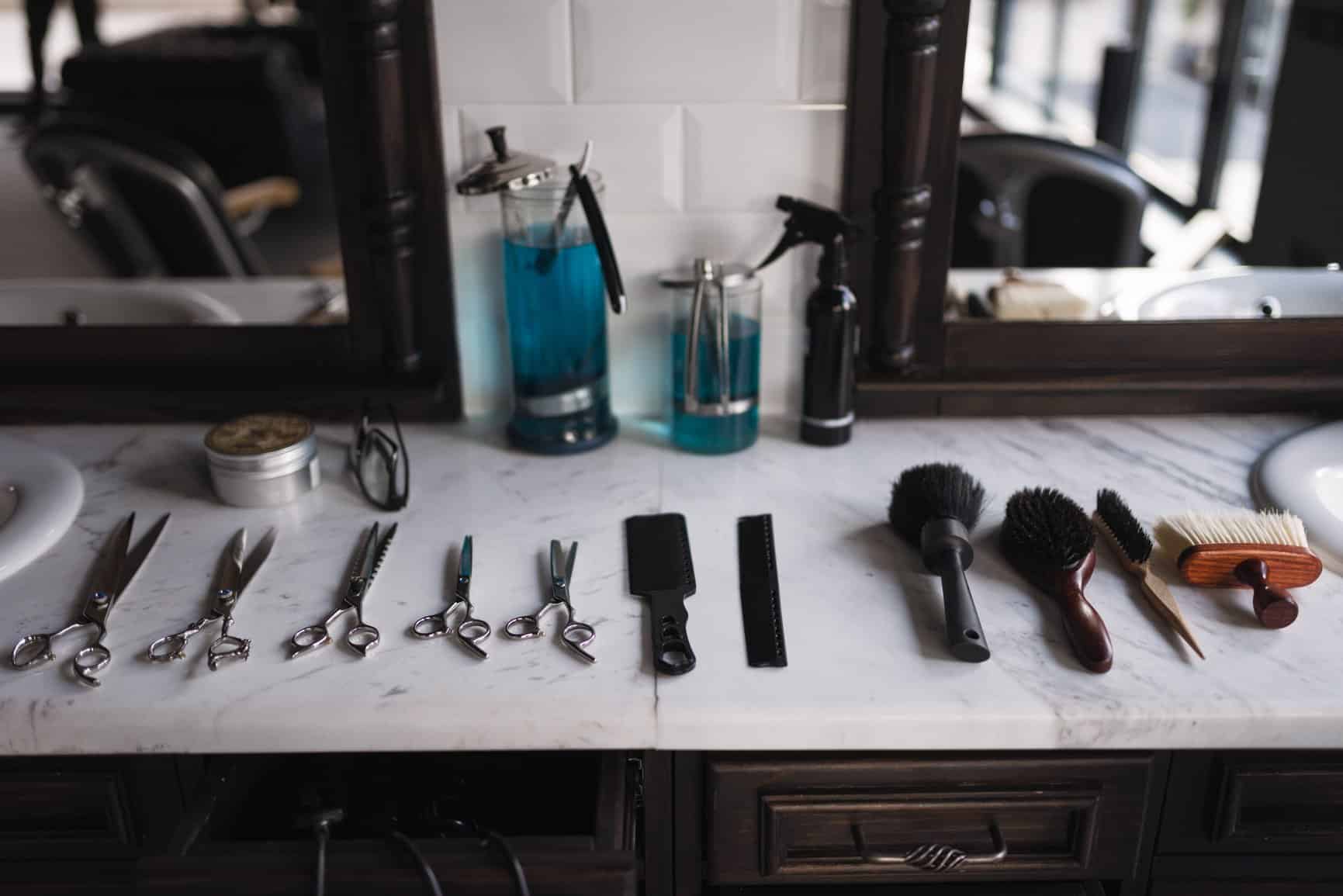Wes Sharpton, Hairstory’s resident hairstylist and ‘scissor wizard,’ began cutting hair at the age of 19 in Lawrence, Kansas. Seeking a bigger challenge, Wes made tracks to New York City, where he joined the hairstyling mecca Bumble and bumble and began honing his skills to new levels. As his cutting career continued to blossom, he was able to learn from many talented hairdressers. Since Wes joined Hairstory and entrusted himself to Michael’s coaching, we’ve been lucky enough to watch him in action, and one of the things we’ve found most striking is not just his remarkable skills with a razor, but rather his uncanny ability to to tune into his clients’ emotions.
Wes has developed a demeanor that seems to calm even the most apprehensive client (and send them off with a smile from ear to ear). As we’ve observed many times over, getting a haircut can be an emotionally charged experience, and we wondered, just how does Wes consistently deal with this challenge? How does he manage to keep a cool head, while giving a client exactly what they don’t even know that they want?
Hairstory: Can you tell when someone is apprehensive about cutting their hair? How do you handle it?
Wes Sharpton: I’ve found that you can get a real sense of whether or not someone is apprehensive if you’re able to sit them down at at eye-level and have an intimate, one-on-one conversation. Some people are fairly emotionally disconnected from their hair, but for some it’s highly emotional. You have to really get a client’s story out of them, learn about their past traumas and work with them.
HS: So it’s really about doing research, making connections, and then presenting options?
WS: Exactly. I’ve learned that I don’t necessarily get paid to give a haircut, I get paid because I have an eye, and I’ve found that it’s important to have a discussion, pull references, and make sure the client and I are on the same page. There’s a big difference between an Anna Wintour bob and an Arizona Muse bob. It’s a process of getting to know the client’s taste, their story, and getting down to what they’re really comfortable with and excited about.
HS: Why do you think that approach seems to put people at ease?
WS: For the client, It’s about being heard. I think people can sense the energy whether you want to take care of them or just want the high of cutting someone’s hair off. Sometimes they’re going to go for your idea, and sometimes they’re not, but it’s important to present options that you have complete confidence in. There are few things worse than a haircut that looks compromised. What it comes down to is finding a cut that you really believe is going to be the best for that person as opposed to cutting for the sake of cutting.
HS: Why do you think people get emotional about cutting their hair?
WS: Some women are told their whole lives that long hair is what makes them pretty, and when asked to take that away in exchange for the unknown, they’re scared. Which is not to say that long hair isn’t right for anyone, it’s just that if you’re toying with the idea of change, why would you let others choose for you?
I still hear women say, “Oh, but guys like long hair,” and my response has become, “But what if you could attract the kind of guy who doesn’t care?”
I’m certainly not anti-long hair, I just think it should be the right thing for the right person. I’ll never forget something that Michael [Gordon] told me once: He’d be cutting hair all day at Bumble and when a client wanted a major change, he’d tell them to come back at the end of his day, when he could take the time to do it with the proper focus and attention. He really understood the importance of being put at ease when going through such a big transformation.
HS: How do you approach clients who seem apprehensive or give you conflicting signals?
WS: I handle everyone on a case by case basis. Good hairdressers are generally very intuitive, they have a real knack for reading what’s going on. There are some clients who really want change, but they have to go through the change, and that can be difficult. These people need you to be strong so that you can help get them through that. Then there are clients who want change, but it’s actually not about the haircut. You have to be careful and ask, “What’s this really about?” Sometimes what they really want is to be a different person and you can’t do that. Getting a haircut is not the same as shopping therapy – you can’t return it.
Finally, there are the people are completely free of apprehension; they want to wear something that feels interesting and they don’t really care about the change. These clients are right there with you and they’re willing to take risks and experiment, and you can get really engaged in a haircut without having to hold their hands. So what it comes down to is listening to a client’s story, giving them something that will flatter them and suit their needs, and then being present through the process.
Q+A originally published on Hairstory. Interested in Hairstory products? Learn more.






